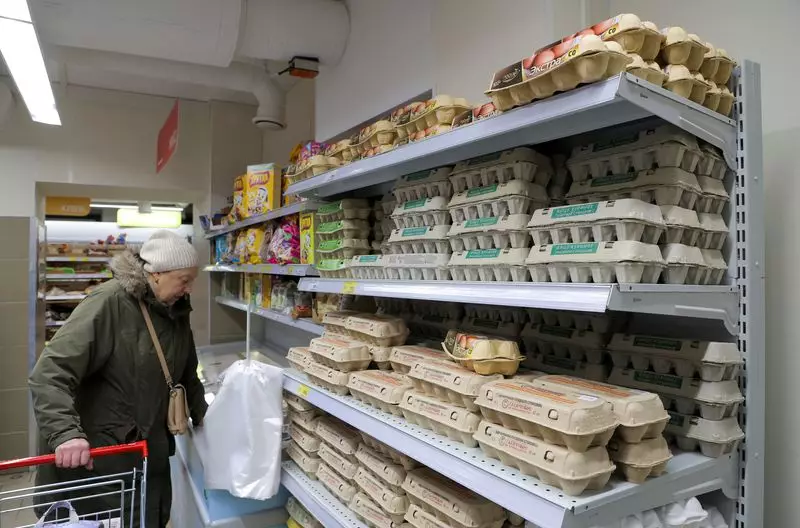In recent weeks, Russia has faced a significant economic challenge as inflation has soared to 9.5% for the year. According to data released by Rosstat, the consumer price index observed a rise of 0.33% in the week preceding December 23. This spike is particularly alarming given that it comes on the heels of the Central Bank of Russia’s unexpected decision to hold the key interest rate steady at an already high 21%. Such a stance has raised questions about the effectiveness of monetary policy in combating escalating inflation, which poses serious risks to both consumers and the broader economy.
One key driver behind this inflationary trend appears to be seasonal fluctuations in food prices. For instance, Rosstat reported staggering weekly increases in costs; cucumbers surged by 8.3%, while tomatoes experienced a 1.9% hike. This volatility in fresh produce is exacerbated by Russia’s reliance on both domestic and imported goods, whereby disruptions in supply chains or adverse weather conditions can have outsized effects on pricing. Additionally, staples that are less influenced by seasonal changes, such as eggs and frozen fish, also reflected notable price increases of 1.7% and 1.4%, respectively.
The Central Bank had previously estimated that inflation would peak at around 8.5% for the year, but recent forecasts are significantly higher. Andrei Gangan, head of the monetary policy department at the Central Bank, has suggested a range for final inflation figures between 9.6% and 9.8%, aligning closely with the current trajectory.
Inflation and Consumer Expectations
The projected inflation rise has not only impacted current market prices but has also shifted consumer expectations for the future. A troubling sentiment is emerging: households anticipate inflation rates reaching 13.9% in the upcoming year, marking a significant increase and the highest level recorded this year. This escalating outlook can stir panic among consumers, leading to a self-fulfilling cycle of inflation as households rush to make purchases sooner rather than later.
Furthermore, respondents to recent surveys indicated they have noticed rising prices on durable goods, including home appliances and electronic devices. This broadening inflationary concern signals a potential shift in consumer behavior as they grapple with the implications of continued price rises.
In responding to this economic crisis, the Central Bank of Russia has stated that its recent monetary tightening is aimed at reducing inflation toward the ambitious target of 4%. However, maintaining a high-interest rate in such a volatile economic climate may restrict investment and consumer borrowing, stifling economic growth. The balancing act facing the Central Bank is complex; policymakers must find an equilibrium that addresses inflation without strangling economic recovery.
The picture painted by Russia’s current inflation landscape is one of uncertainty and rising pressure on consumers. With food prices fluctuating dramatically and household expectations for inflationary trends expected to rise, the Central Bank will need to navigate these turbulent waters carefully to restore stability and confidence in the economy. The challenge of curbing inflation while fostering growth remains an arduous task that will require astute policy decisions in the months ahead.

